What is Plaster Finishes?
Important Point
Having your walls up is not the end of the building construction process. If you want to decorate your walls or cover their uneven surfaces, your contractors can finish your building with plaster. Plastering is the process wherein the coarse surfaces of your walls or ceilings are covered to achieve a smooth and aesthetic finish.
There are several types of plaster finishes, and in this article, we will tell you how to achieve five different styles. Every finish gives your wall a different appearance, and it’s up to you to choose which one to use in your project.
Also, Read: Peb Structure Means
Types of Plaster Finishes
After the application of plaster, finishing applied on the final coat of plaster following are some of the finishes.
- Smooth Coat Finish.
- Sand Face Finish.
- Rough Cast Finish or Spatter Dash Finish.
- Peddle Dash or Day Dash Finish.
- Depeter Finish.
- Scrapped Finish.
- Textured Finish.
- Special Material Used in Plastering for Finishing Coat.
- Acoustic Plaster.
- Asbestos marble Plaster.
- Barium Plaster.
- Granite Silicone Plaster.
- Plaster of Paris of Gypsum Plaster.
- Keene’s Cement Plaster.
1. Smooth Coat Finish
In this type of finish, the finishing coat is a smooth and levelled surface. The mortar used is made of cement and fine sand 1:3. Mortar is applied with the help of wooden float.
2. Sand Faced Finish
Sand faced finish is applied in two coats. The first coat is applied in 1:4 cement sand mortar of 12 mm thickness.
It is provided wish zig-zing lines. After curing it for seven days, the second coat is applied in the thickness of 8 mm.
The mortar for a second coat is prepared from the cement sand mix ratio 1:1. The sand of uniform size is used. A sponge is used in a second coat when it is wet.
The surface of the final coat is finished by rubbing clean and washed sand of uniform size by means of wooden float. This results in the surface having sand grains of equal and uniform density.
Also, read: Definition Related for Plastering Work | Tools For Plastering | Preparation of Background for Plastering
3. Rough Cast Finish or Spatter Dash Finish
1:1:3 = Cement: Sand: Aggregate are used to prepare mortar for this type of finish. The coarse aggregate may vary from 3 mm to 12 mm in size.
The mortar is thrown on the prepared plaster surface then by means of a large trowel. The surface is then roughly finished using a wooden float.
This finish is water-proof, durable, and resistant to cracking and crazing. It is used for external rendering.
4. Peddle Dash or Day Dash Finish
In this finish, clean pebbles of size from 10 to 20 mm size are dashed against the final coat of plaster.
The pebbles may be lightly pressed into the mortar with the help of wooden float. The final coat of plaster is having Cement: sand mix proportion of 1:3 and thickens 12 mm.
5. Depeter Finish
In this type of final finish coat of plaster is applied to have thickness 12 mm, and when it is a wet condition, the pieces of gravel flint are pressed with hand on the surface.
Flints of different colours may be used to obtain beautiful patterns.
Also, read: What Is Plaster | Methods of Plastering
6. Scrapped Finish
The final coat of plaster of 6 to 12 mm applied. Then it is allowed to be stiffened for a few hours. The surface is scrapped in a pattern for a depth 3 mm.
Steel straight edge old saw blades or such other tools may be used for scrap. Such a scrapped surface is less liable to cracks.
7. Textured Finish
This is used with sketch plastering ornamental patterns or textured surface are made on the final coat of stucco plastering by working with suitable tools.
8. Special Material Used in Plastering for Finishing Coat
To meet with some specific requirements of finished surfaces such as durability better appearance, fireproofing, heat insulation, etc. special materials are added in mortar.
The following are the special materials to be used.
- Acoustic Plaster.
- Asbestos marble Plaster.
- Barium Plaster.
- Granite Silicone Plaster.
- Plaster of Paris of Gypsum Plaster.
- Keene’s Cement Plaster.
8.1. Acoustic Plaster
The materials like gypsum mixtures are added in mortar for finishing coat such a coat undergoes a chemical reaction and produces gas bubbles and due to the bubbles tiny openings are formed in the coat and it appears like a honeycomb.
These honeycomb minute openings absorb sound. Such plaster is useful in interior walls of halls auditorium etc.
Also, read: What Is Plaster | Type of Plaster | Defects In Plastering
8.2. Asbestos Marble Plaster
For a better appearance of finishing coat, mortar is made of cement asbestos and finely crushed marble and applied as finishing coat.
8.3. Barium Plaster
To protect persons working in X-ray rooms from radioactivity, finishing coat is applied with mortar made of cement, sand, and barium soleplate.
8.4. Granite Silicon Plaster
Granite and silicon are mixed with mortar. This finish is used for a superior type of construction. It is a quick setting and elastic in nature. This eliminates cracks.
8.5. Plaster of Paris of Gypsum Plaster
Ground gypsum is heated at 160o to 170o C to obtain plaster of parish. Plaster of Paris hardens with 3 to 4 minutes of adding water.
Suitable retarders are added to increase setting time. Plater of a parish is generally used in combination with lime for ornamental work and reporting carks.
Gypsum plaster has fire resistance, light weight. It does not shrink while setting. It has a sound-insulating properly. It is very useful for ornamental work.
However, gypsum plaster is soluble in water.
8.6. Keene’s Cement Plaster
Kenees’s cement is obtained by calcination of plaster of Paris with alum. This is very hard and sets in a few days taking a white glass-like polish. It is useful for decorative work.
What Is Plaster Wall?
Plaster is a building material used for the protective or decorative coating of walls and ceilings and for moulding and casting decorative elements. In English, “plaster” usually means a material used for the interiors of buildings, while “render” commonly refers to external applicationc.
What Is Plaster Wall Made of?
Plaster, a pasty composition (as of lime or gypsum, water, and sand) that hardens on drying and is used for coating walls, ceilings, and partitions. Plastering is one of the most ancient building techniques.
Why Are Plaster Walls Bad?
As it gets older, plaster is continually curing harder and harder which makes it more brittle than drywall. In high traffic areas or in areas with unstable foundations cracks are common in walls and especially ceilings which can be devastated by age and gravity.
What Do I Need to Know About Plaster Walls?
Plaster is more fire resistant than drywall. While plaster walls are smooth and flat, they contain slight surface trowel marks, adding a desirable Old World feel to the character of a home. Lath and plaster is more contour-friendly than rigid drywall panels.
What Kind of Plaster Is Used for Walls?
The most common form of plaster for interior walls is gypsum plaster. Plaster walls are generally created through a three-coat process. To begin, lath must be secured to the framing. Historically, lath has been made of wood strips, but more recently metal or plasterboard have come into use.
Where Is Plaster Made?
With mining operations dating back to 1876, British Gypsum now operates three gypsum mines across the UK that specifically support the manufacturing of plaster. The plant at Barrow-upon-Soar in Leicestershire is the largest and most technologically advanced plaster plant of its kind in Europe.
Is Plaster Eco Friendly?
Unlike many types of paint (the other alternative for covering walls), “plaster is an environmentally sound natural material: breathable, and free of chemicals and VOC,” writes Margot in Remodeling 101: Modern Plaster Walls, Six Ways. If you’re concerned about toxins and eco-friendly finishes, natural plasters are a good option.
Is There Lead in Plaster?
If you have an old plaster wall that is covered in lead paint, tearing it down and throwing it in a dumpster creates a huge amount of dust that may be toxic. Because babies routinely put their hands in their mouths, they are at high-risk of lead poisoning after touching contaminated dust in or around a home.
Is Plaster Water Resistant?
Exterior cement plaster is used in the construction of buildings, and it doesn’t need to be waterproofed because it is made of cement. Plaster used on the inside of homes is a different material altogether. It is water-soluble and, without care, can succumb to moisture and humidity.
Plaster Finish
Plaster wall finishes generally last longer than paint jobs or wallpaper do; after plaster dries, it hardens, stone-like, similar to its original form as raw limestone or gypsum. In addition to wall finishes, plaster today is often used to construct surfaces that need to be hard, such as a squash court.
Rough Plaster
Rough Cast Plaster: Rough cast plaster is composed of sand and gravel in a specific proportion and is applied over a freshly plastered surface. The base of plaster consists of two coats under a 12 mm thick layer and a top layer with thickness of 12mm in a cement mortar ratio 1:3.
Finish Plastering
Finish Plaster is a mill-mixed lime/gauging finish plaster that requires only water to achieve a high-quality plaster lime/finish with easy troweling characteristics. It is designed for finishing conventional and veneer plaster interior surfaces. Offers a setting time of 60-70 minutes with excellent working conditions.
Wall Finishes Plaster
Plaster wall finishes generally last longer than paint jobs or wallpaper do; after plaster dries, it hardens, stone-like, similar to its original form as raw limestone or gypsum. In addition to wall finishes, plaster today is often used to construct surfaces that need to be hard, such as a squash court.
Are Plaster Walls Expensive?
True, plaster walls are more expensive than painted drywall; that’s because they’re more labor intensive to install (most require at least three coats). But they’re also typically longer lasting and more beautiful.
Is Plaster Water Resistant?
Exterior cement plaster is used in the construction of buildings, and it doesn’t need to be waterproofed because it is made of cement. Plaster used on the inside of homes is a different material altogether. It is water-soluble and, without care, can succumb to moisture and humidity.
Plaster Wall Finishes
- Smooth Coat Finish.
- Sand Face Finish.
- Rough Cast Finish or Spatter Dash Finish.
- Peddle Dash or Day Dash Finish.
- Depeter Finish.
- Scrapped Finish.
- Textured Finish.
- Acoustic Plaster.
- Asbestos marble Plaster.
- Barium Plaster.
- Granite Silicone Plaster.
- Plaster of Paris of Gypsum Plaster.
- Keene’s Cement Plaster.
Types of Plaster
- Browning plaster.
- Bonding plaster.
- Thistle plaster.
- Carlite plaster.
- Hardwall plaster.
- Dri-coat plaster.
- One Coat plaster.
- Tough coat plaster.
Concrete Plastering
Golmex plaster (a concrete plaster) is a high-quality Portland cement composed of lime, graded silica sand, and admixtures to create the appearance of polished concrete finish on interior and exterior wall surfaces.
Sand Plaster Walls
In order to sand a plaster wall, you will need to use coarse sandpaper on rough textured surfaces and finer grit sandpaper on smooth surfaces. It is important to take your time when sanding plaster because you could crack or damage the wall if you sand too vigorously.
Wall Plaster Material
These coats form the base of the wall and are mixed of lime or gypsum, aggregate, fiber, and water. The lime is typically derived from limestone or ground oyster shells. Many firms now work with gypsum since it eliminates the need for added fiber and has a much quicker set up and drying time
How Much Weight Can Plaster Walls Hold?
Your wall will be able to take as much weight as you can hang on it. Every 12″x12″ span of 1/2″ drywall can hold 40lb in pull out load, as if you were hanging from a ceiling. The other type of load is shear or pull down load.
How Do I Hang Something on a Plaster Wall?
You can use long wooden plaster screw to hang a picture in a wall stud. It is highly recommended to drill a hole first, because this will greatly reduce the risk of the plaster cracking. Another best practise is to place a piece of masking tape on the area that you will be drilling into.
What Do You Mean by Plaster?
Plaster is a building material used for the protective or decorative coating of walls and ceilings and for moulding and casting decorative elements. In English, “plaster” usually means a material used for the interiors of buildings, while “render” commonly refers to external applications.
What Does Plaster Mean in England?
plaster Definitions and Synonyms
countable Britisha thin piece of cloth or plastic that is sticky on one side, and that you put on your skin to cover a cut. The American word is Band-Aid. Synonyms and related words. Bandages, supports and other dressings.plaster
What Is the Purpose of Plastering?
Countable Britisha thin piece of cloth or plastic that is sticky on one side, and that you put on your skin to cover a cut. The American word is Band-Aid. Synonyms and related words.
How Expensive Is Plaster?
| Item | Labor Cost | Material Cost |
| Plaster: New Application | $2-5 per sq.ft. | $2-$10 per sq.ft |
| Plaster: Refinishing | $4-$10 per sq.ft. | $10 per sq.ft. |
| Gypsum: Easy Install, Good Insulation | $2-$6 per sq.ft. | $2-$5 per sq.ft. |
| Lime: Flexible, Porous, Requires an Expert for Installation | $5-$10 per sq.f | $5-$6 per sq.ft. |
| Cement: Durable, Easy to Work with | $4-$7 per sq.ft. | $4-$5 per sq.ft. |
Why Is Plaster Used for Walls?
Plaster is a building material used for coating, protecting and decorating internal walls and ceilings. It can also be used to create architectural mouldings such as ceiling roses, cornices, corbels, and so on. The most common types of plaster are a composition of gypsum, lime or cement with water and sand.
How Thick Is a Plaster Wall?
A traditional 3-coat plaster is typically 7/8″ thick and when you add in the 1/4″ wood lath that supports the plaster wall, you have a wall that is more than 1″ thick! Compared to today’s most common drywall thickness of only 1/2″, that is a difference worth noting.
How Thick Is Plaster on Block Wall?
Recommended thickness of plastering for block walls is 12 MM, 15 MM or 20 MM. 12 MM thick cement plaster is done where the plain surface of brick masonry is plastered. 15 MM cement plaster is required on the rough side of 9” and 4.5” wall.
What Type of Plaster Is Used for Walls?
Gypsum plaster can achieve a fine finish and is often used as a topcoat in plastering projects. It’s less prone to cracking, making it a great choice for your walls’ longevity. This is a versatile plaster that can be used to create a great first coat, called undercoat, for your project.
Why Is It Called a Plaster?
One’s a term used in England for “adhesive bandage” and the other is an American brand name that’s almost completely generified. The use of plaster for this type of bandage in Britain is allusion to the traditional use of sticky pastes to ensure the bandage stayed in place.
What Is Special Plaster?
Plasters of special mixes are required for giving decorative feature to the surface of walls and for special purposes like water-proofing, restricting shrinkage, etc.
What Do You Mean by Special Plaster in Civil Engineering?
Special Plastering Materials for Different Purposes Used in Building Construction. Plastering is the formation of smooth/rough durable surface over the rough surfaces of walls, columns, ceilings etc.
Which Is Better Plaster or Drywall?
Plaster is more sound-proof, but drywall usually means better insulation. A dense material, plaster blocks sound transmission much better than gypsum drywall. However, even though plaster is denser, it can’t beat the thermal capabilities of standard drywall coupled with modern insulation commonly found today.
What Are the Disadvantages of Using Plaster?
- When plastering cracks are difficult to repair.
- It is very expensive to repair.
- Despite the extra labor of hanging and finishing the drywall.
What Are the Disadvantages of Gypsum Plaster?
- Gypsum plaster cannot be used for outside walls since they retain dampness. Also gypsum plastering cannot be done in areas which are continuously damp such as bathroom etc.,
- Gypsum plaster is costlier than traditional cement motar plaster (cement and sand) for same thickness of plaster.
What Is Plaster Finish?
Plastering is a process by which coarse surfaces of wall or ceiling roofs are changed or turned or rendered to provide smoothness. In this case under coat which is low cost coarse grain material is used to render the surface followed by finish coat that is thin layer of fine grain materials.
How Do You Use Plaster?
Plastering is a process by which coarse surfaces of wall or ceiling roofs are changed or turned or rendered to provide smoothness. In this case under coat which is low cost coarse grain material is used to render the surface followed by finish coat that is thin layer of fine grain materials.
How Do You Work Out Square Meters for Plastering?
Measure all the way around the room by starting in any corner and working your way around the walls and finishing in the same corner – you should end up with 10.2 m. With a calculator, multiply 2.4 by 10.2 and you get 24.48m2 (you could potentially round this to 24.5m2 for ease).
Can You Plaster Over Drywall?
Plaster veneer may also be applied to ordinary drywall, or over existing walls, but this requires “gluing” the existing wall surface by painting on a special adhesive compound, and then applying a thin layer of “base coat” plaster. After the walls are fully cured, they are ideal for painting or papering.
What’s the Difference Between Plaster and Plaster of Paris?
Plaster of Paris is one of three types of plaster. The other two are lime plaster, made from calcium hydroxide and sand, and cement plaster, a combination of plaster, sand, Portland cement and water. Plaster of Paris is the most commonly used plaster and is also called gypsum plaster.
What Type of Plaster Is Used for Bathrooms?
Venetian plaster is one of the greenest wall treatment option suitable for bathrooms, kitchen and areas prone to getting wet on a daily basis. It uses versatile and durable materials such as lime, cement, and sand which prevents moisture from accumulating inside the wall finish.
How Is Plaster Installed?
Steps of plaster installation are as follows.
- Use trowel to place mound of veneer plaster onto hawk.
- Scoop up some plaster with the trowel, making sure it’s centered on its blade.
- Smear plaster onto the wall with the trowel using an upsweeping motion.
- Turn over the trowel and work the plaster down.
- Maintain even pressure to produce a thin, smooth plaster coat.
- Continue working your across the wall, using stilts or stepladder to reach high areas.
How Do I Identify Different Types of Plaster?
Check for an area where the plaster is in disrepair or falling off the walls. This allows you to look at the wall and determine the support backing and type of plaster used. Scrape a small bit of plaster from the wall and examine it closely for sand and horsehair in lime or calcite-based plaster.
What Are the Different Layers of Plaster Called?
Three coats of wet plaster are applied in layers to the lath: the scratch coat, the brown coat, and the finish coat.
How Much Does Plastering a Room Cost?
Homeowners usually pay between $2 and $10 per square foot for plaster work. If you need resurfacing work done, you can expect to pay at least $10 per square foot. Without resurfacing you’ll likely pay between $2 and $5 per square foot.
Which Is Cheaper Plaster or Drywall?
Because plaster requires more of a specialized skill than drywall installation and takes longer to complete, the labor alone will usually run about three times higher or more than drywall installation. The material costs are comparable.
Types of Plastering
List for types of plaster finishes used in building construction are:
- Smooth cast finish.
- Rough cast finish.
- Sand faced finish.
- Pebble dash finish.
- Scrapped finish.
- Depeter finish.
- Textured finish.
Finishing Plaster
Finishing plaster is used to create the final surfacing on any wall or ceiling. There are various types available and they will be applied over either a base coat or plasterboard. Coats of finishing plaster will need to be smooth to crate the ideal facing.
Cement Finish Wall
A mortar of cement, sand and water is applied on walls to give it a smooth matte finish. A cement-textured finish can give your home a unique look.
The Final Coat of Plaster Is Known As
Explanation: The final coat of the plaster applied to the walls and ceilings is called the finishing coat. This coat is also called skimming coat or setting coat.
Cement Plaster Finish
Different types of plaster finishes with different appearances are available as follows. Smooth cast finish. Rough cast finish. Sand faced finish. Pebble dash finish.
Plaster Types
- Clay plaster.
- Gypsum plaster (plaster of Paris)
- Lime plaster.
- Cement plaster.
- Heat-resistant plaster.
Stucco Wall Finish
Stucco itself is a cement-type mixture made of sand, Portland cement, lime, and water. Stucco is considered a thin finish coat, the outermost layer that is visible and can be painted. To make stucco work, you need layers below it to provide an adequate base.
Mala Plaster
However, it is a single coat plaster without any smooth finish. It has a rough finish but again not that much rough and textured like double coat sand face plaster. It is not used as a final finish, and it is used as a sub-coat only.
Wall Finishing
As the name “Wall Finishes” itself suggests that it is finish given to the wall to enhance the interior or exterior look of the structure. Wall finishes used for the interiors are quite delicate and need maintenance.
Sand Faced Plaster
Sand Face Plaster is a layer of cement sand mortar applied on the brickwork which also works as a damp proof coat. This plaster is used as a final touch for surfaces like walls and ceilings.
Rough Cast Plaster
Roughcast or pebbledash is a coarse plaster surface used on outside walls that consists of lime and sometimes cement mixed with sand, small gravel and often pebbles or shells. The materials are mixed into a slurry and are then thrown at the working surface with a trowel or scoop.
Types of Interior Plaster Finishes
5 Types of Plaster Finishes for Walls and How to Achieve Them
- Sand-faced finish. If you want a sustainable base for a wall that you will paint on, finish it with a sand-faced plaster.
- Smooth cast finish.
- Roughcast finish.
- Pebbledash finish.
- Scrapped finish.
Cement Plaster Finish Advantages and Disadvantages
Cement strengthens the walls, especially the hollow-concrete blocks. Also, when it comes to electrical fittings and wiring, cement plaster will not develop cracks and offer a sturdy base for drilling and holding it together. Cons: The surface after cement plastering tends to look uneven and rough.
What Is Multi Finish Plaster Made Of?
Thistle Multi-Finish is a retarded hemihydrate, pre-mixed gypsum plaster, requiring only the addition of clean water to prepare it for use.
Stucco Finish
Stucco is a plaster-like material that is commonly used as an exterior finish for buildings. There are several different types of stucco finishes, each with its own unique texture and appearance.
Types of Plaster Walls
- Clay plaster.
- Gypsum plaster (plaster of Paris)
- Lime plaster.
- Cement plaster.
- Heat-resistant plaster.
Stucco Finish Wall
Stucco finish is a popular choice for exterior walls, as it is durable, low-maintenance, and can provide a variety of textures and finishes.
Stucco Cement Finish
Stucco cement finish
Stucco, or portland cement plaster, is a versatile facing material that can be applied to flat or curved surfaces either inside or outside any building or structure. Stucco has great appeal as a surface finish because of its utility, low first cost, and minimum need for maintenance.
Rough Plaster Wall
A rough plaster wall is a type of interior wall finish that has a textured and irregular surface. It is created by applying a layer of plaster to the wall and then troweling or otherwise manipulating the surface to create a rough, uneven texture. This texture can be customized in a variety of ways, such as by varying the size and shape of the trowel marks, adding in aggregates or other materials, or using different colors or finishes.
Smooth Plaster Finish
A smooth plaster finish is a type of interior wall finish that has a smooth and polished surface. It is created by applying multiple layers of plaster to the wall and then troweling or sanding the surface to create a flat, even texture.
Rough Cast Plaster Finish
A rough cast plaster finish is a type of exterior wall finish that has a textured and irregular surface. It is created by applying a layer of plaster to the exterior wall and then throwing or projecting small stones or other aggregates onto the surface while the plaster is still wet.
Rough Plaster Wall Finishes
Rough Cast Plaster Finish
Rough cast finish is also called as spatter dash finish. Mortar used to get rough cast finish consist coarse aggregate along with cement and sand. Their ratio is about 1: 1.5: 3. The size of coarse aggregate used is 3mm to 12mm.
Types of Plastering in Building Construction
Types of Plaster Finishes used in Building Construction are:
- Smooth Cast Plaster Finish.
- Rough Cast Plaster Finish.
- Sand Faced Plaster Finish.
- Pebble Dash Plaster Finish.
- Scrapped Plaster Finish.
- Depeter Plaster Finish.
- Textured Plaster Finish.
Finishing Wall
Finishing a wall typically involves applying a final layer or coating to the surface to create a desired look and feel. The type of finish used can depend on factors such as the type of wall material, the desired style or design, and the intended use of the space.
Like this post? Share it with your friends!
Suggested Read –
- Types of Damp
- What’s Low E Glass
- Gypsum Plaster Walls
- West Point Bridge Designer
- Sand Chemical Composition
- Manufactured Sand Concrete
- Difference Between One Way Slab and Two Way Slab | What is Slab
- Introduction of USCS | USCS Classifies Soils into Two Broad Categories
- What Is Plaster | Plaster Ratio | History of Plastering | Requirements of Good Plaster
- Introduction of Gantry Girder | Load on Gantry Gutter | Type of Load on Gantry Gutter
- What Is Chicken Mesh for Plaster | Type of Chicken Mesh for Plaster | Why Use Chicken Mesh for Plaster
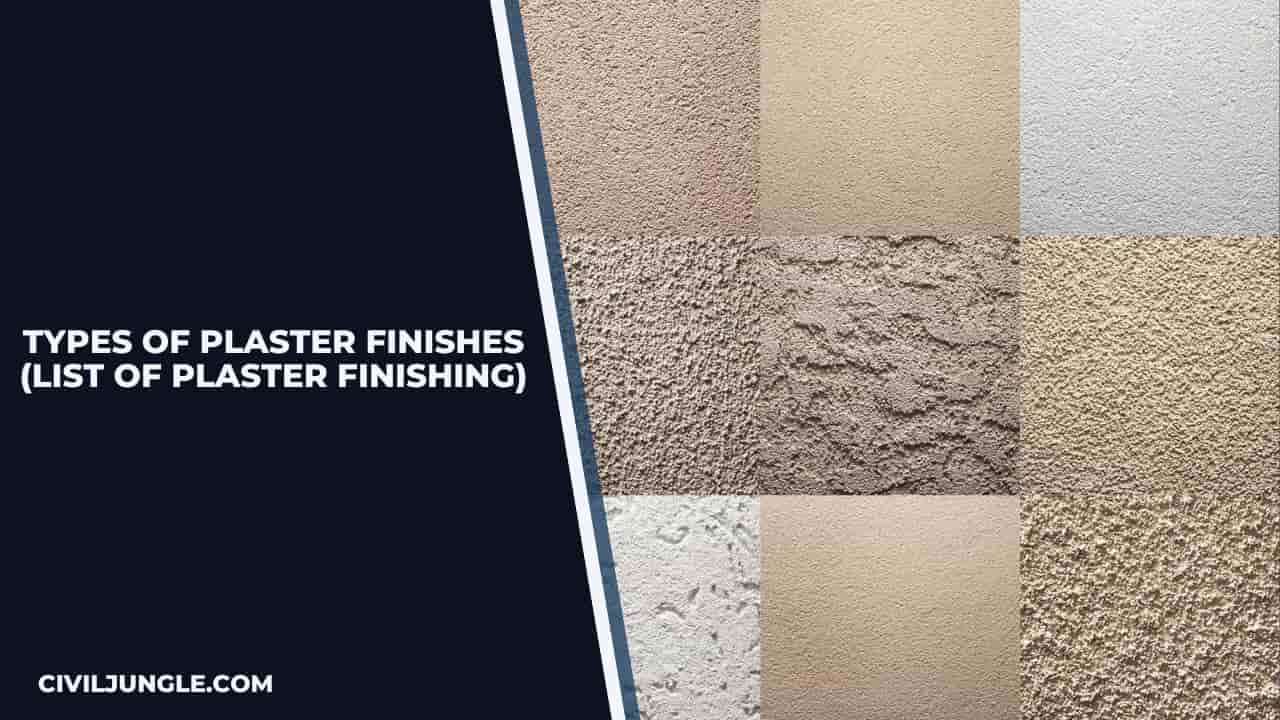
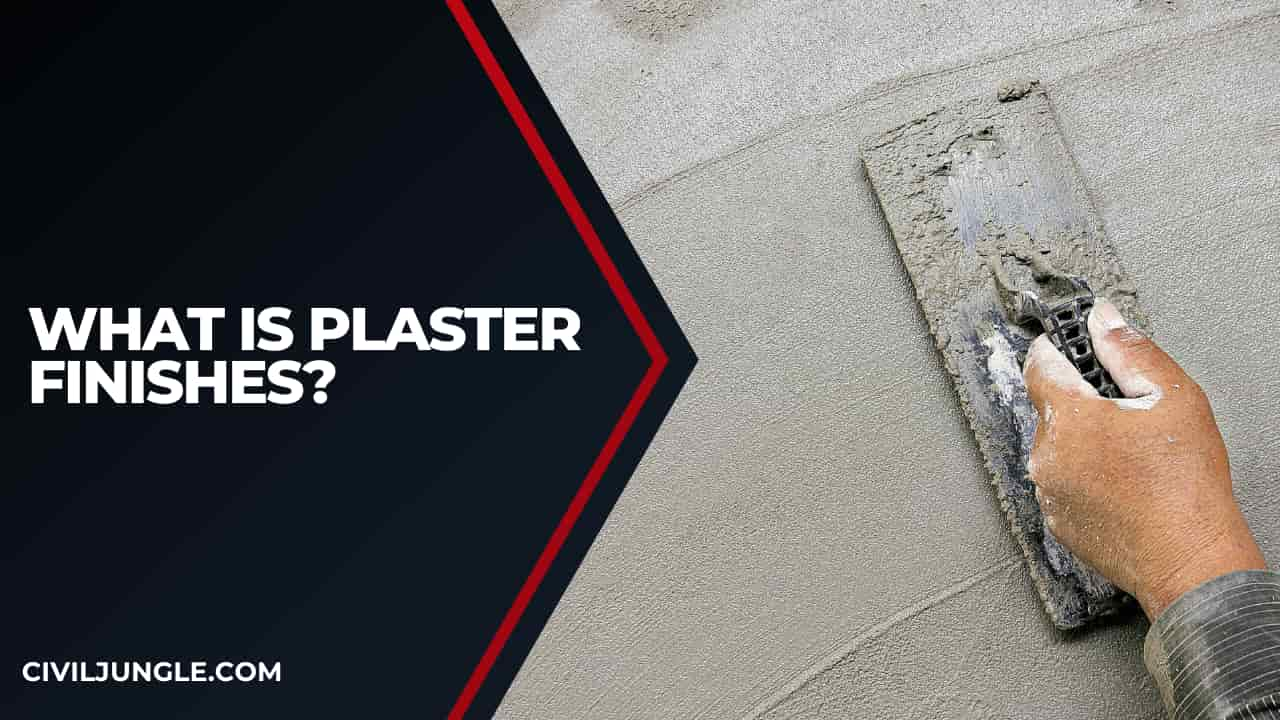
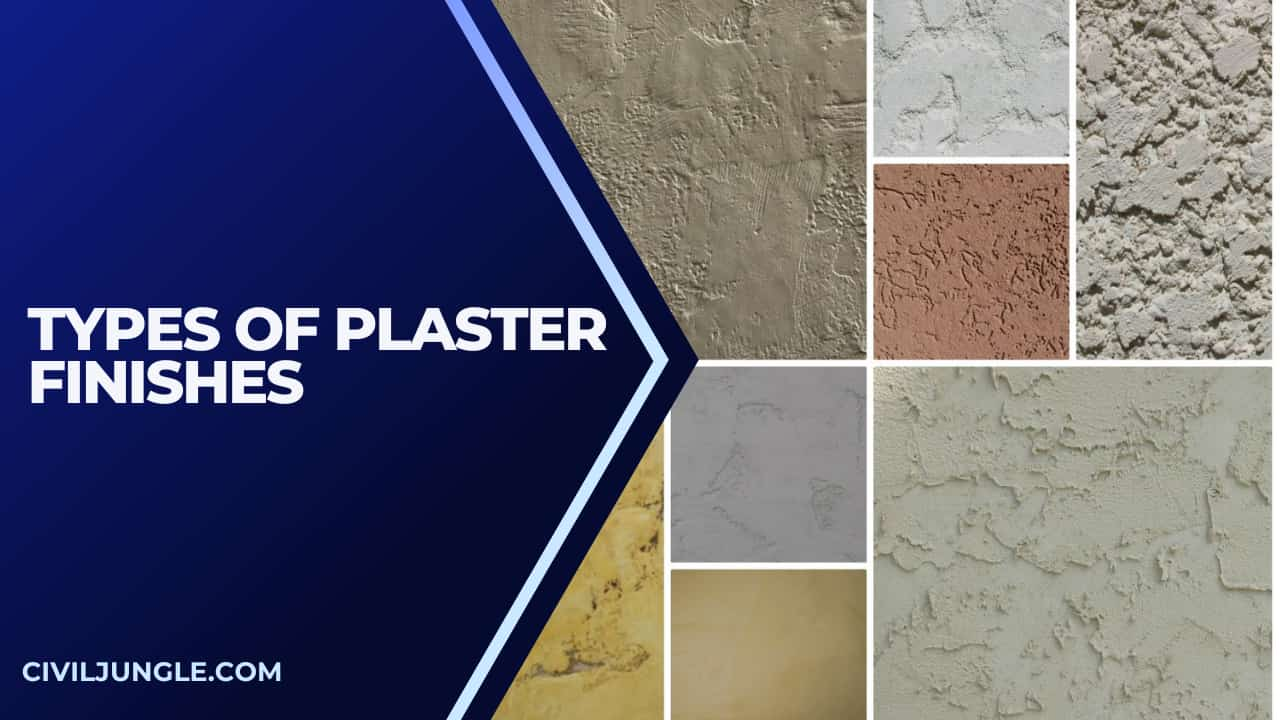
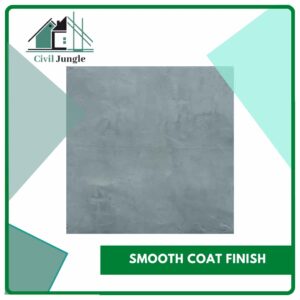
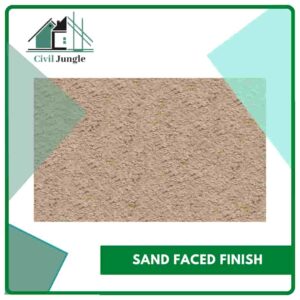
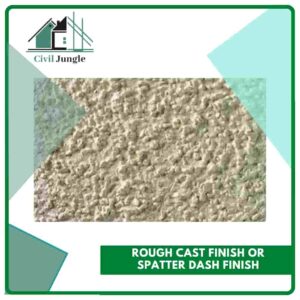
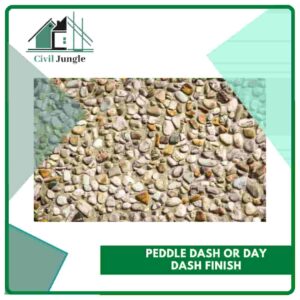
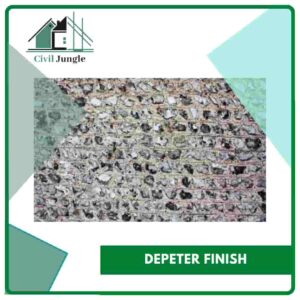
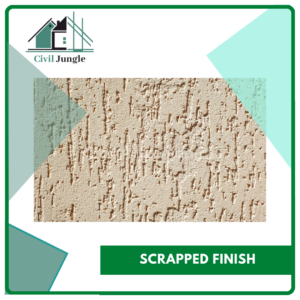
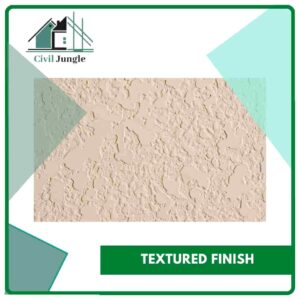
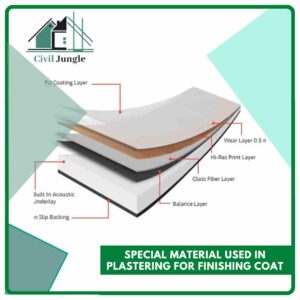
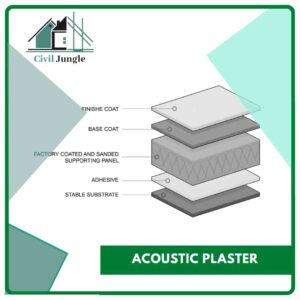
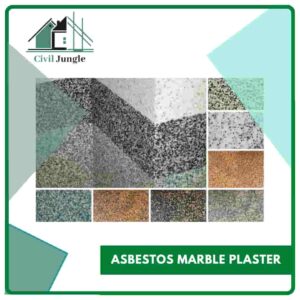
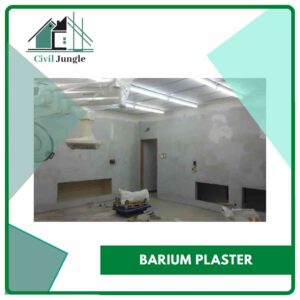
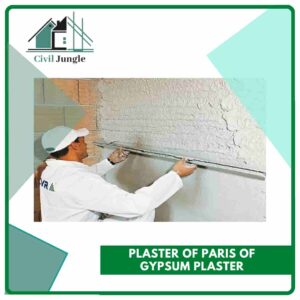
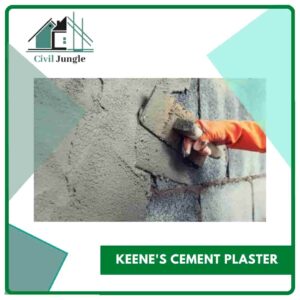

Very helpful data for education.
Thank you for sharing with us your post, I really appreciate the content of types of plaster finishes and the steps are very helpful for the beginner. It was a very informative blog.
Nice Detailing of “finishing plastering”
Thnaks